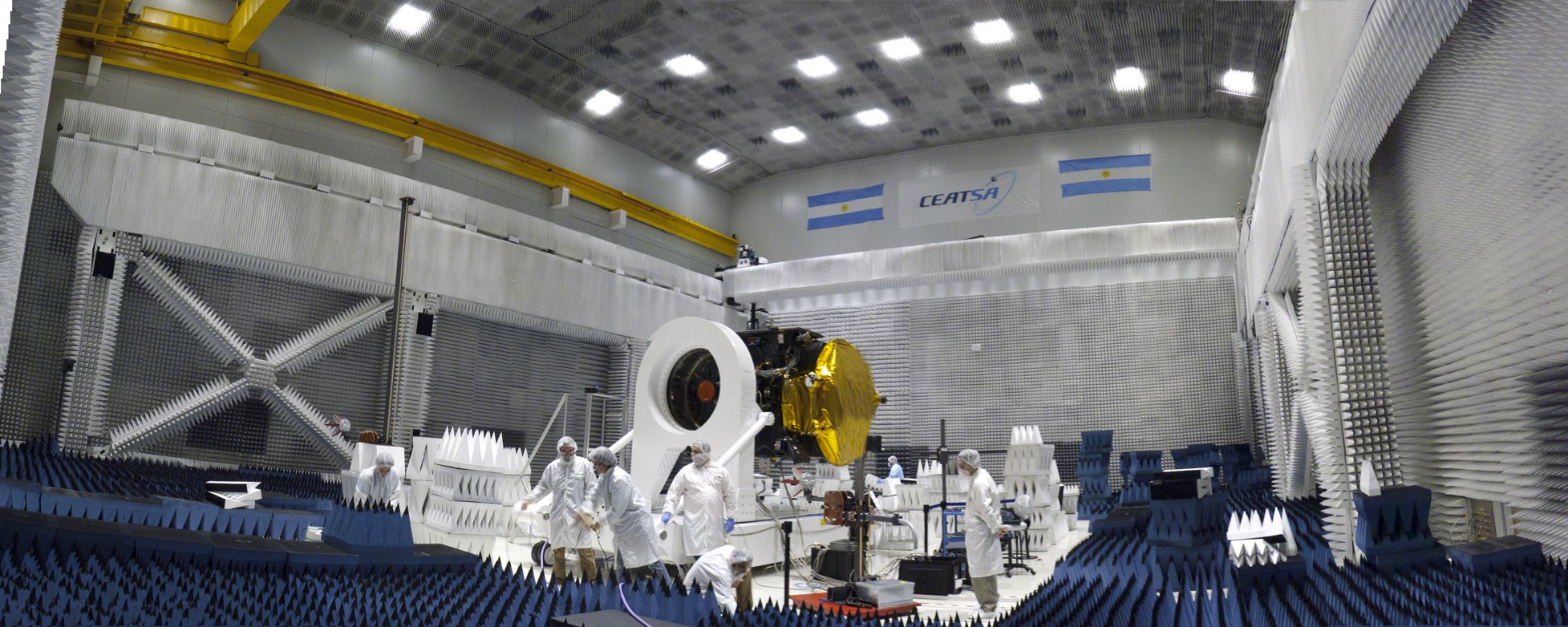

At the heart of Argentina’s oldest national park, overlooking a glacial lake, a small city thrives. This is Bariloche. With a population slightly over 100,000, the city has long been noted for its ski resorts, chocolate factories, and astonishing views. But Bariloche is also home to a company that saved Argentina’s home-grown space industry.
I’ve visited Bariloche a few times in my life (some of my family lives there), but I’ve never really thought very much about its space heritage. The last time I visited, however, it wasn’t the massive lake system nor the seemingly infinite chocolate that impressed me the most. This time, it was an enormous building on the outskirts of the city.
I remember the moment quite clearly. It was early in the morning, and the sunlight that poured through the bus windows woke me up before we arrived. I had been sleeping for about eight hours, and yet I was confusingly tired. Outside, houses were starting to pop up in the open country while the bus hastened toward the city’s outskirts.
The scattered dwellings gave way to the suburban, working-class neighborhoods that had emerged at the beginning of the millennium, when Argentina witnessed the painful end of its dollar-pegged currency, and construction–a cheaper endeavor since–boomed.
Most of the people onboard the bus were still sleeping. I was staring out the window, watching the early starters and the monkey-puzzle trees pass by; the soft grunting of the vehicle’s gearbox was the only sound I can remember hearing. And then it appeared. An enormous building with the name INVAP written on its side. I recognized it immediately.
INVAP was created in 1976, when the research laboratories of the Argentine Atomic Energy Commission spun off into a private company. It develops an array of cutting-edge technology–mostly in the nuclear and aerospace fields–and recently completed the design and construction of Argentina’s first geostationary satellites.
That’s no easy task–only a fistful of countries have made it that far in terms of space technology. It was a significant achievement, both for the company and the country’s nascent space industry. But what was it doing in a ski resort? The answer is a wild tale of immigrants, scientists, and Nazis.

Two indigenous tribes, the Puelches and Poyas, originally populated Bariloche’s lands–before being latterly absorbed by the larger Mapuche tribe. The 17th century saw the arrival of Spanish conquistadors and sword-bearing Jesuit priests, both of whom established one ill-fated mission after another until the Jesuits were expelled from Spanish America by European empires in 1767.
The modern city took its form in the last quarter of the 19th century, as a result of military action and immigration. The president at the time was Julio Argentino Roca, an army general known for the Conquista del Desierto, a military campaign comparable to the conquest of the American West.
The costs of Roca’s campaign were brutal: blood spilled, families torn apart, and large chunks of aboriginal culture crushed in order to expand the country’s borders and absorb the increasing mass of Europeans coming off the boats. By 1881, Chile formally gave up on its territory claims, and German-speaking immigrants–including Swiss and Austrians–began to settle.
Before the arrival of tourism, Bariloche easily fit the image of a frontier post, offering the kind of seclusion that fresh starters, pioneers, and shady characters often sought. The town asked few questions of its new arrivals, and hundreds of central European immigrants found hope in this remote stretch of Patagonian rainforest.
By the mid-1940s, Bariloche already looked like it had been transplanted from the Alps, with its mountains, forests, lakes, copycat architecture, chocolate factories, and typical Indo-European foods. The frontier post began to rise as a tourist destination for Argentines–and also, more prominently, as a perfect hideout for Nazis on the run after the end of the Second World War.
But one coincidence–a Nazi fugitive’s choice of one hideout over another–triggered unimaginable consequences for the emergent ski resort. Unintentionally, the events that followed cleared the path for the creation of the first company in Latin America capable of building spacecraft.

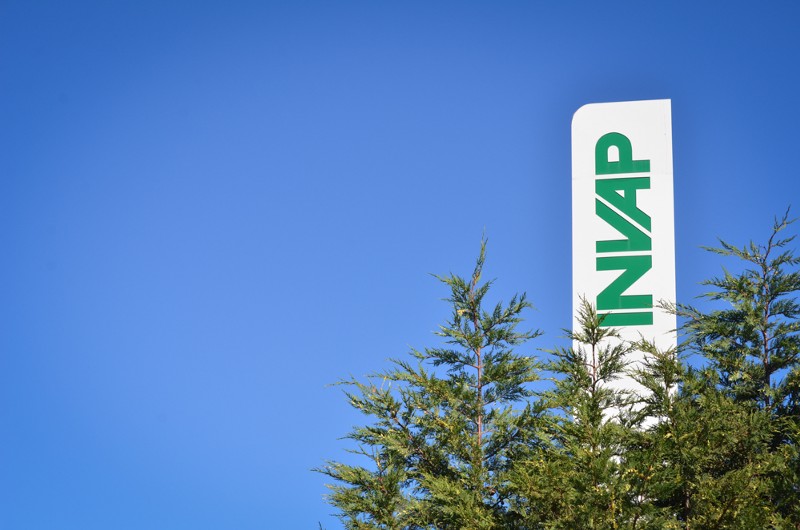
The biggest arms race in the history of mankind began right after the end of WWII. The United States and the Soviet Union quickly went from allies to rivals, positioning themselves as the two modern superpowers for the decades to come.
At the time, Argentina was a significant economic power, though high levels of inequality plagued its economy. In 1946, Juan Perón took office as the country’s president. In an effort to place Argentina among the developed nations and to achieve higher levels of social justice, Perón established a welfare state model of authoritarian populism that would later be known as “Peronism.”
In Perón’s view, industrial development (including military industrial development) was the only way to accomplish his objectives. With a bold sense of opportunity, Argentina performed its own version of Operation Paperclip, during which former Nazi engineers and scientists were secretly recruited to work on the country’s R&D programs. Among those recruited was Kurt Tank.
A World War I veteran, Tank was the kind of engineer Perón wanted: a skilled technical prospect who was eager to work on advanced military-industrial projects. Tank had obtained an engineering degree in Berlin before working for Rohrbach Metall-Flugzeugbau, a short-lived airplane maker. Afterwards, he worked for another failed aircraft manufacturer called Albatros, though this time luck fell on his side. Instead of sinking into oblivion, Albatros was absorbed by the more successful Focke-Wulf. One of Tank’s designs proved deadly and entered mass production–with over 20,000 units made, his Focke-Wulf Fw 190 became part of the Luftwaffe’s backbone. However, Germany would end up losing the war, and in 1947, after negotiations with the United Kingdom, China, and the Soviet Union failed, Kurt Tank took off to Buenos Aires.
An extract from Time, published on October 23, 1950, recalls:
A single-seat jet fighter mounting four 20-millimeter cannon was undergoing new tests in Argentina last week, after whistling through a first trial flight clocked at a speed of 646 miles per hour. The swept-wing I.Ae. 33 Pulqui II, powered by a Rolls-Royce turbojet engine, is the second jet plane to be designed and built in Argentina. The designer: Professor Kurt Tank, former technical director of Germany’s Focke-Wulf concern and designer of the formidable FW 190.
Argentina’s quest for air superiority moved fast thanks to Tank, and Perón wanted to take things to the next level. He asked Tank for a physicist who could help develop new sources of nuclear power, and the engineer dropped the name of the previously unknown Ronald Richter.
Once he had safely arrived in Argentina, traveling under the pseudonym of Pedro Matthies, Richter pulled out a proposal for his new employers: controlled thermonuclear fusion. Somehow, Richter managed to convince the president of his bold, if scientifically dubious, ideas. And–as if things couldn’t get bizarre enough–Perón awarded the man a medal, appointing him to lead the country’s most secretive project, Project Huemul. There are two things that bear the name “Huemul” in Argentina: The first is an elusive species of Patagonian deer; the second refers to a small lake island, located at the heart of Argentina’s oldest national park, close to Bariloche.
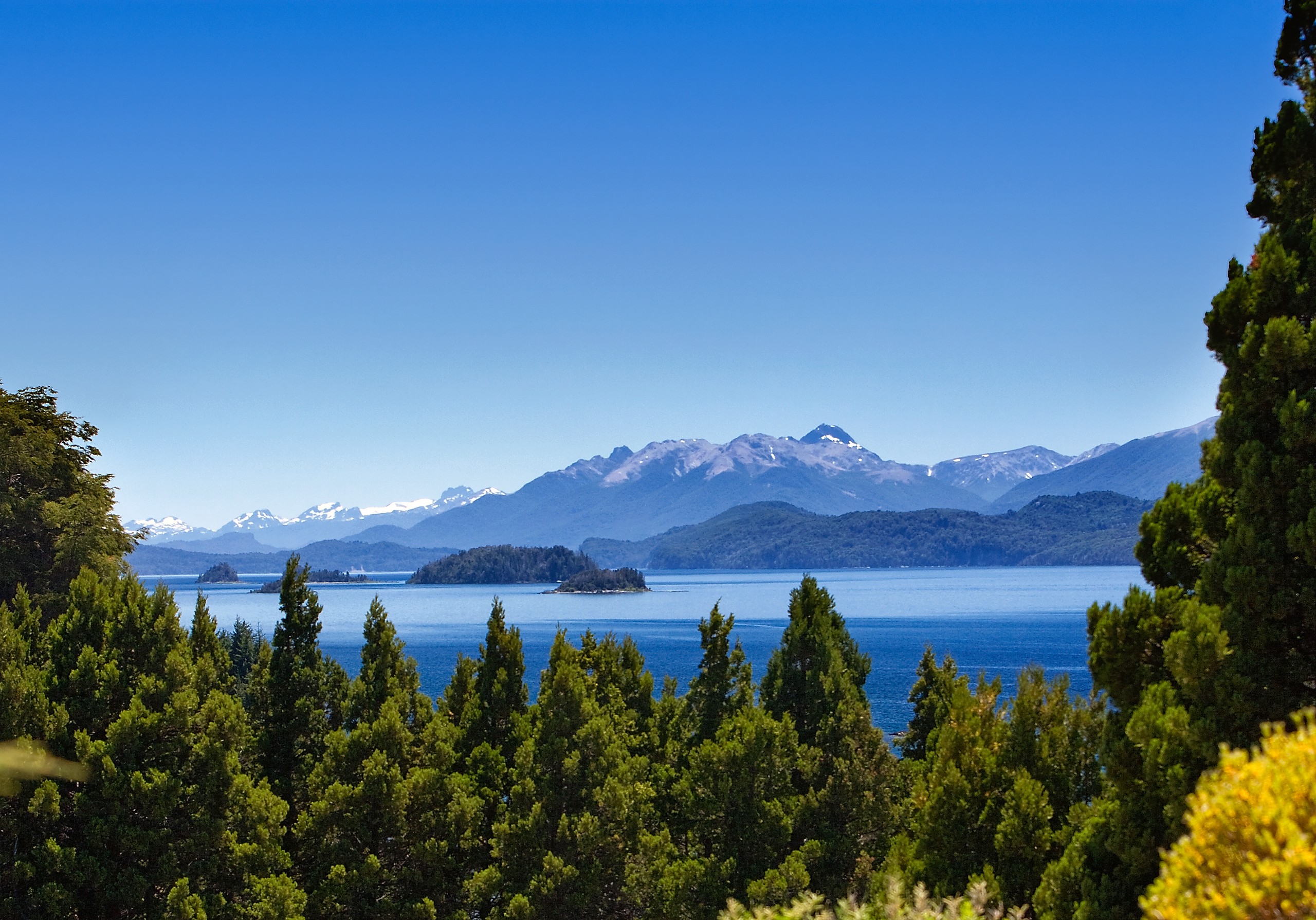
Huemul Island is small, sheer, and covered by a dense cypress and southern beech forest. No bridge has ever connected the island to the mainland, and the view from the shore is limited to thick greenery and a small pebble-stoned beach. The island was the perfect location for Richter’s secret nuclear enterprise. Behind large brick-walled labs, the scientist isolated himself on the island to work on his research. But it wouldn’t last long. Richter declined to divulge any information about his progress and refused visitors, raising suspicion from the very people who had hired him in the first place.
After an extensive on-site examination in 1952, led by a young Argentine scientist named José Antonio Balseiro, Richter’s Huemul Project was abruptly halted. Balseiro, a promising 32-year-old researcher, was studying in Manchester when the Argentine government requested his services. He promptly formed a group of inspectors and went to the island to survey Richter’s work. In the report from the inspection (available online, in Spanish), Balseiro stated:
My experience in dealing with people with a science background and academic criteria suggests that the attitude taken by Dr. Richter is far from the eccentricities attributed to men of science. To this I must add that in conversations maintained with Dr. Richter over diverse physics subjects he showed an astonishing lack of knowledge for a person undertaking such task, as well as very personal ideas about facts and phenomenons widely known and proven.
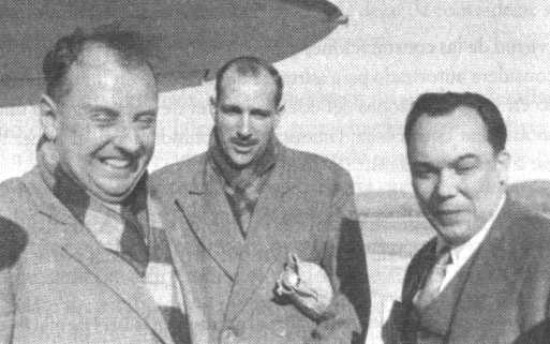
An embarrassed Perón immediately cancelled the project and fired Richter, who spent the rest of his life as a low-profile citizen in Montegrande, a suburb not far from Buenos Aires. Richter died in 1991, having never revealed what he claimed to be the secret of nuclear fusion. Balseiro, on the other hand, was appointed as director of the physics department at the University of Buenos Aires–while Perón’s hope for cheap, bottled energy mutated into more earthly aspirations.
A few months before the coup d’état that overthrew Perón in 1955, the president signed the papers that established the creation of Bariloche’s Physics Institute, with Balseiro appointed as its first director. Under Balseiro’s guidance, it achieved major progress, including the design and construction of Latin America’s first experimental reactor. Balseiro remained there until his death in 1962; subsequently, the institute’s name was changed to the Balseiro Institute.
The facility was lucky enough to survive the succession of military governments that followed Juan Perón’s deposition. The military (as well as significant portions of civil society) had a deep-rooted hatred for the president. As a result, Perón’s party–Partido Justicialista–was banned, his figure smeared, and hundreds of his followers harassed, tortured, and executed. Many promising projects were scrapped and dismantled, including Kurt Tank’s Pulqui II jet. Tank himself left the country for India, where he led the team that developed India’s first domestically produced jet fighter–the HAL Marut.
But the Balseiro Institute made it through the political instability, and talent kept emerging from its classrooms. In the mid 1970s, a former student saw the opportunity to create a company that could flourish from the institute’s knowledge output. Conrado Franco Varotto convinced the Argentine authorities to publicly fund a company for applied research and development. In 1976, a joint venture between the local government and the National Commission of Atomic Energy gave birth to INVAP. The very same town that once hid a delusional Nazi scientist’s nuclear fusion lab was now the proud home of a company capable of manufacturing high-end satellite technology.
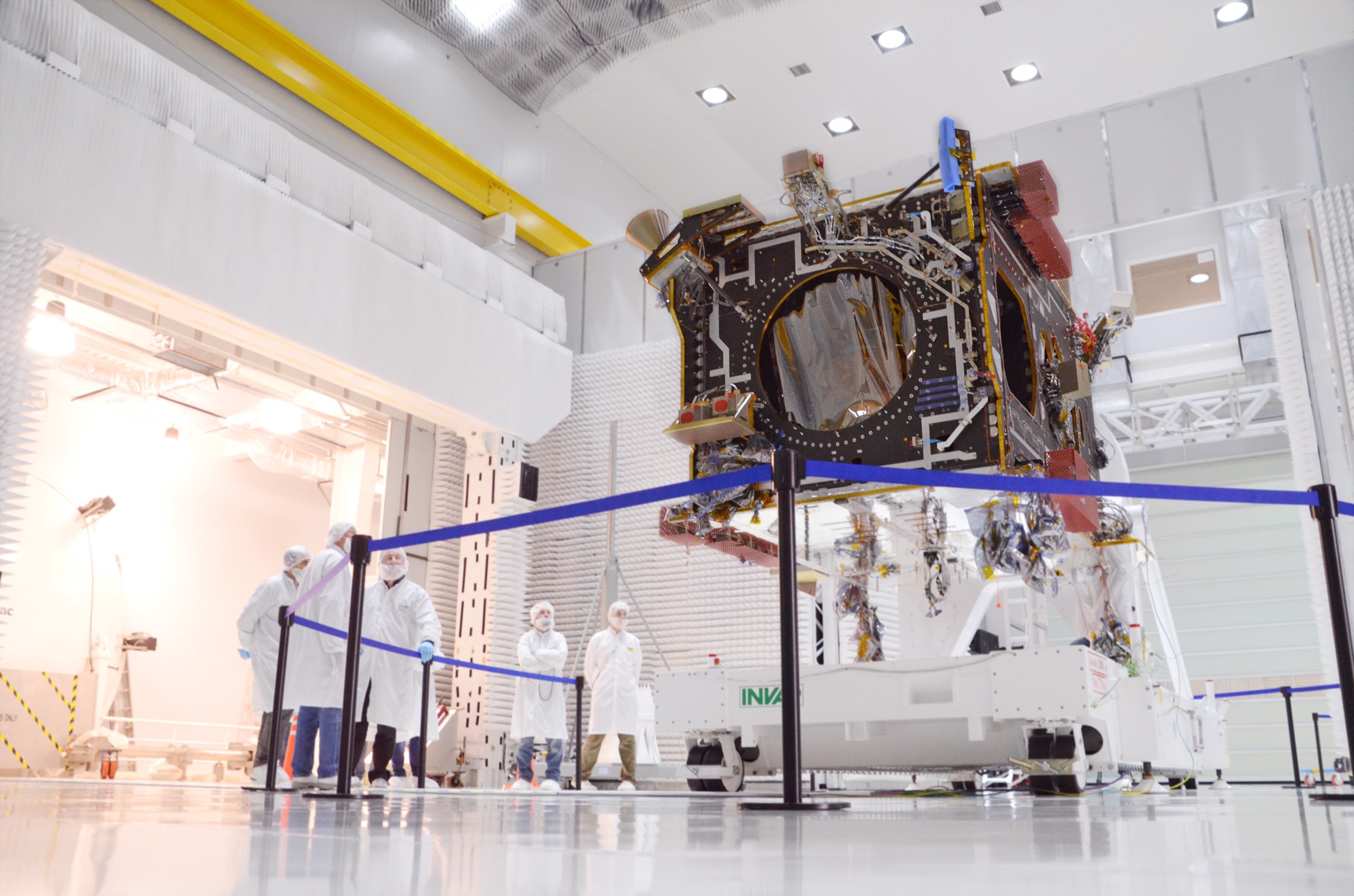
From the bus, the compound I saw seemed quite new. Its buildings stand in the middle of a grassy field that looks like a golf course, enclosed between the road and the lake. Two stretches of wire fence surround the area. The place is spartan and neat. Square lines, furrowed tin roofs, and soft-toned walls make up most of the landscape. Overall, it looks like a small-town airport without the landing strip.
People I’ve met in Bariloche–whether attached to INVAP or not–show a great deal of pride in the endurance of the company and its facilities. I quickly understood the logic: as a state-funded company, it suffered from exposure to a succession of administrations that were not particularly interested in developing high-technology applications with public funds.
But INVAP survived. A handful of projects kept the company alive throughout the late 1980s and 1990s–especially the design and manufacture of small nuclear reactors for the governments of Peru, Algeria, and Egypt. It helped that the company doesn’t rely on subsidies or direct public funds; its operational money comes from the products and projects that it’s able to develop and sell.
Three events marked a turning point during Argentina’s economic crash between 1998 and 2002. The first was the end of the currency peg in 2002, a move that made many economic activities cheaper in terms of competitive advantage; the second was a new government administration that envisioned scientific development as a key part of economic revitalization; and the third was INVAP’s design and construction of an Open Pool research reactor for the Australian Nuclear Science and Technology Organisation, which the firm describes as “the largest cash sale export of a turnkey state-of-the-art technology plant ever made by an Argentine company.” Since then, INVAP has gone from strength to strength.
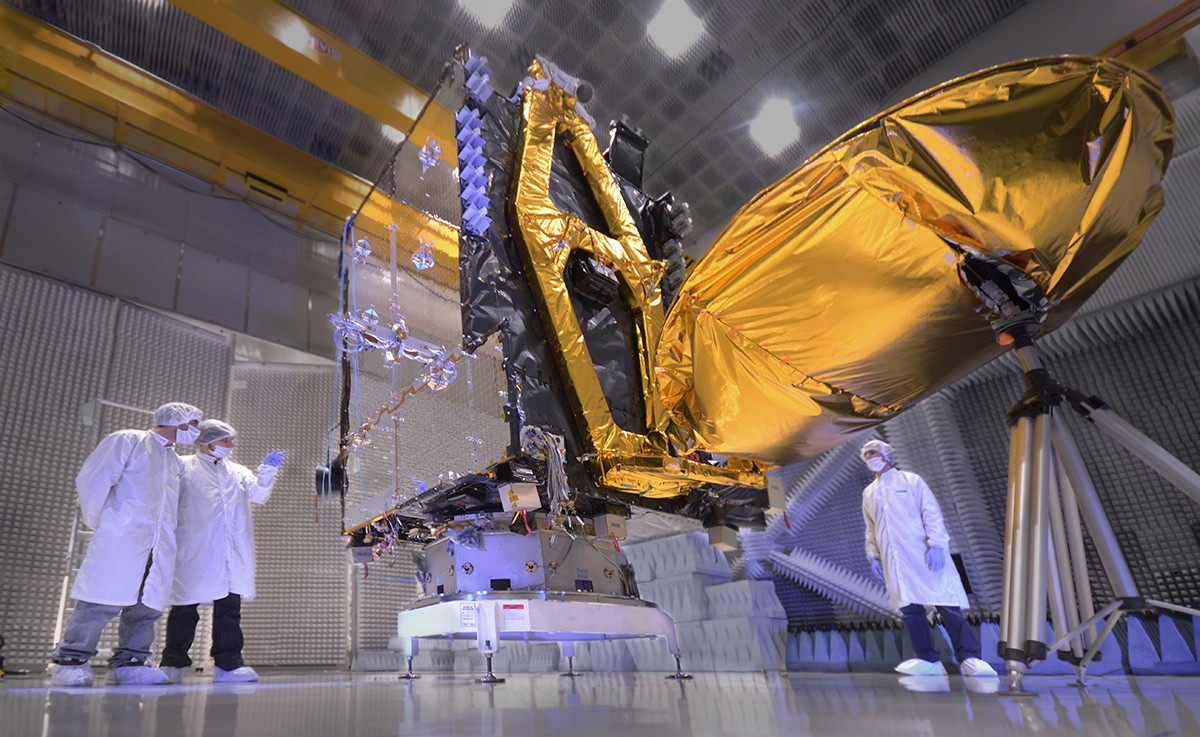
In the late 2000s, INVAP received its toughest project yet: a directive to build a series of geostationary satellites for the Argentine government. It was going to be a challenge–the firm had to create technology from scratch on a tight deadline. If it failed, the client (an ad-hoc state company named ARSAT) would lose access to a precious resource in the modern world–its orbital slots.
Satellites in geostationary orbit–where their orbital speed matches the Earth’s rotation so they can remain above a single point on the surface–must all occupy a single ring above the equator. As satellites need also be spaced apart to avoid interference, there are only a limited number of “orbital slots” available, which are allocated by the International Telecommunication Union. However, they have to be used–a country can’t sit on unused slots for long.
That’s why the deadline was so tight for INVAP. Not only was time running out on Argentina’s lease on the slots, but former ARSAT president Matías Bianchi Villelli said that England was interested in acquiring the license. Both ARSAT and the Argentine government officials were–for obvious historical reasons–not happy with that prospect. After spending millions in license maintenance and obsolete third-party satellites, the Argentine government decided that the benefits of building a homegrown, high-tech satellite were worth the risks. Out of the blue, INVAP was joining the space race.
On October 16, 2014, it succeeded. Following seven years of R&D, ARSAT-1 was successfully launched from the Guiana Space Centre by an Ariane-5 rocket. INVAP’s first satellite proved to be reliable, and a year after a second (in a series of three) was launched, cementing the company’s place in the aerospace field.
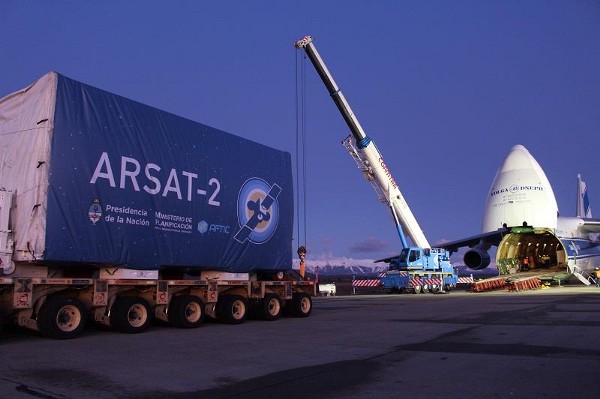
But nothing lasts forever. In 2015, elections took place in Argentina and a new president–Mauricio Macri–took office. Unlike the previous administration, Macri’s new government made explicit its intentions of reducing public spending as much as possible to stabilize the country’s stagnant economy.
A young lawyer named Rodrigo de Loredo was appointed as ARSAT’s new president, and it didn’t take long for him to change course. In May of this year, de Loredo announced the suspension of the contract for the third satellite, alleging that until the two previous satellites (already in orbit) became profitable, the third wouldn’t be finished.
Unfortunately, INVAP has nothing to do with the profitability of the satellites; the operation and commercialization rely solely on state-owned ARSAT. But while the company must have felt the blow, new opportunities will hopefully appear in the near future. INVAP has shown successes in the development of state-of-the-art space tech, becoming the first in Latin America to do so and attaining international recognition in the process. In 2010, UNESCO described the company as “a shining example of coordination between the public and private sectors “¦ the living proof that a national technology producer can find a place in the global market.“
Facing a new political reality and the end of the ARSAT contracts, the future of INVAP is now in flux. During the past decade, the company relied on juicy government-sponsored projects to thrive; now, the market will determine the fate and value of INVAP’s capacity to engage in high-tech developments.
In the meantime, the company seems to be adjusting well to the shifting context, already announcing new projects. The most noticeable include the manufacturing of nuclear medical equipment for the Bolivian Atomic Energy Agency; the development of a wind farm for Dow Chemical; and the design and construction of an Earth observation satellite for SABIA-Mar, a cooperation program between the Brazilian and Argentine space agencies.
Since there aren’t many similarly-small companies in the world trying to stay relevant in so many demanding fields, it’s hard to predict what the future will look like for INVAP. For now, the company has shown that it doesn’t run from complex projects–whether they involve satellites, renewable energy, or drones. One hundred and twenty years ago, a stubborn pioneering spirit made a city like Bariloche possible. Perhaps the same kind of spirit will help INVAP gain the protagonism it needs to become a relevant player in the ultra-competitive sectors of nuclear, aerospace, and beyond.


How We Get To Next was a magazine that explored the future of science, technology, and culture from 2014 to 2019. This article is part of our Above & Beyond section, which looks at our understanding of the universe beyond Earth. Click the logo to read more.
